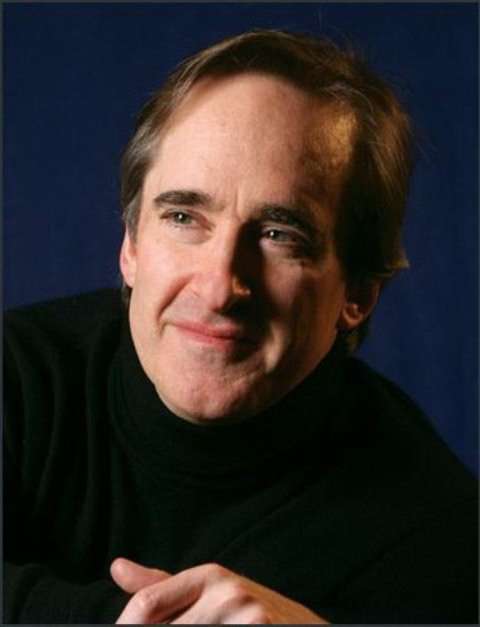|
Back
May Festival Taps Eastern Europe Cincinnati
Music Hall
05/21/2011 -
Antonin Dvorák: Te Deum
Leos Janácek: Glagolitic Mass
Igor Stravinsky: Symphony of Psalms
Christine Brewer (soprano), Kara Shay Thomson (soprano), Ekaterina Semenchuk (mezzo-soprano), Rodrick Dixon (tenor), Morris Robinson (bass)
Paul Jacobs (organ), May Festival Chorus, Robert Porco (director), May Festival Youth Chorus, James Bagwell (director), Cincinnati Symphony Orchestra, James Conlon (conductor)

J. Conlon (Courtesy of May Festival)
After Verdi’s Messa da Requiem on June 20, the second night of the 2011 Cincinnati May Festival visited Eastern Europe, with sacred works by Leos Janácek, Antonín Dvorák, and Igor Stravinsky. It was an extraordinary evening: Old Church Slavonic, Latin and the universal language of music, with Leos Janácek’s Glagolitic Mass (1927), Igor Stravinsky’s Symphony of Psalms (1930), and Antonín Dvorák’s Te Deum (1892).
May Festival music director James Conlon not only conducted stellar performances, but provided program notes live from the stage. To wit: Glagolitic refers to the script introduced by St. Cyril in the 9th century to give the Slavs a written language (Old Church Slavonic) and spread Christianity. A Slavic liturgy was created, though Latin ultimately prevailed (by papal decree). Janácek and Dvorák forged one link on the program, Czech nationalism. Likewise, the symphonic conception of Dvorák’s Te Deum provided a link to Stravinsky’s Symphony of Psalms, a symphony where instruments and voices are treated as equals.
Janácek’s Mass has an unusual structure, beginning and ending with an orchestral Intrada and containing a lengthy solo for organ. Inner movements correspond to the elements of the Latin Mass (Kyrie, Gloria, Credo, Sanctus, and Agnus Dei). The Cincinnati Symphony provided a brawny Intrada, the brasses sounding like “Gabrieli on steroids” (Conlon), recalling Janácek’s contemporaneous Sinfonietta. Brewer produced a laser-bright sound in the Kyrie (Gospodi pomiluj). Dixon had a harder job in the Gloria (Slava) where he often had to sing over the chorus and orchestra.
The Credo (Veruju ) was full of raw emotion, with its repeated interjections of veruju (“I believe”), sometimes echoed plangently by the woodwinds. Jacobs on the organ joined the CSO in an explosion of sound preceding Raspet ze zany (“He was crucified for us”) creating a devastating impression. By contrast, the Sanctus (Svet) began softly, with the angelic sound of strings, flute, celeste and solo violin. The vocal quartet sounded the invocation (“Holy, holy, holy”) with huge brass accompaniment, to glorious effect. After a mysterious opening, Agnus Dei (>I>Agnece Bocij swelled up warmly in the chorus.
The only disappointment in the performance was the organ itself, a stopgap electronic instrument installed during the 1970s when Music Hall’s vintage Hook and Hastings pipe organ was demolished. Jacobs gave it maximum impact, however, and deserves unreserved praise.
Stravinsky’s three-movement Symphony of Psalms with the CSO and May Festival Chorus offered no disappointment whatsoever. The Latin texts were enunciated cleanly and precisely by the voices. The CSO, joined by pianists Michael Chertock and Heather MacPhail, made a perfect neo-classic blend. The performance was extremely moving, from the sober Exaudi orationem meam (“Hear my prayer”) to the stark, fugal Expectans expectavi (“I waited patienty”) to the last soft, repeated of Psalm 150.
A late work composed for his visit to the America in 1892, Dvorák’s four-part Te Deum was the final work on the program. Conlon, who takes justifiable pride in having introduced it to the May Festival in 1993, led it with energy and enthusiasm. Soprano Kara Shay Thomson, bass Robinson and the 48-voice May Festival Youth Chorus joined the larger ensemble in a celebratory performance that opened with a barrage of timpani and a full-throated Te Deum laudamus. Robinson, backed by the CSO brasses, was magisterial in part two, Tu Rex gloriae. Conlon took the chorus down to a whisper on Per singulos dies (“Throughout each day”) in part three, giving the text a very human dimension. The final section, Dignare, Domine, was lyrical (Thomson), laudatory and downright tingling with joy.
The May Festival continues May 22 with the annual concert at the Cathedral Basilica of the Assumption in Covington, Kentucky, featuring the Youth Chorus and the May Festival Chamber Choir; May 27 with the Mass in B-flat Major, Heiligmesse by Franz Joseph Haydn and Gustav Mahler’s Das klagende Lied; and May 28 with Elijah by Felix Mendelssohn.
Cincinnati May Festival
Mary Ellyn Hutton
|